Consonants:
The old Chinese way of writing Pinyin was quite different from the international standard way we do at present: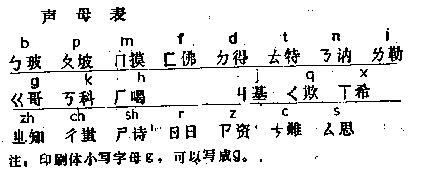
The second line shows the way in which people uesed to write Pinyin.
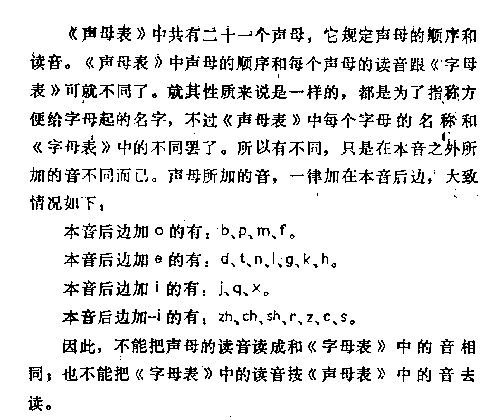
In the above explanations
of the table show that there are altogether 21 consonants in Chinese Piyin
and the above table formulate the order and the pronanciations of them.
In the table the order and the prononciations of the consonants are quite
different from the letter in the alphobatical table. The differences appear
in the vowals which are added to the original sounds. The vowals added
to the consonants are as follows:
those with the vowal [o] (like English
[w![]() ]): b,
p, m, f;
]): b,
p, m, f;
those with [e] ( like English [![]() ]):
d, t, n, l, g, k, h;
]):
d, t, n, l, g, k, h;
those with [i] like English [i:]: j,
q, x;
those with -[i]: zh, ch, sh, r, z, c,
s.
According to the standard international phonetics, the consonant table should be like the following:
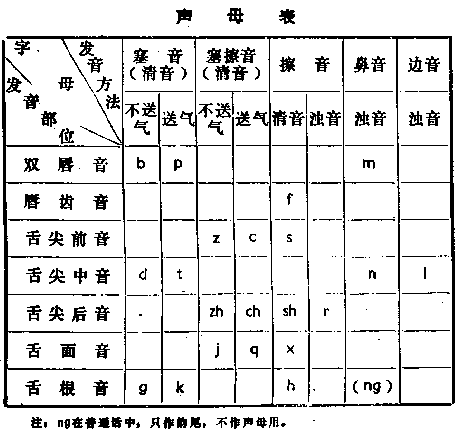
| Plosives
(voiceless) |
Affricates
(voiceless) |
Fricatives | Nasals | Laterals | ||||
| Unaspirated | Aspirated | Unaspirated | Aspirated | Voiceless | Voiced | Voiced | Voiced | |
| Bi-labials | b | p | m | |||||
| Labio-dental | f | |||||||
| Apical | z | c | s | |||||
| Blade-alveolar | d | t | n | l | ||||
| Blade-palatal | zh | ch | sh | r | ||||
| Dorsal | j | q | x | |||||
| Velar | g | k | h | (ng) | ||||
| Note: In standard Chinese, "ng" is not used as a consonant but as the end of a vowal. | ||||||||
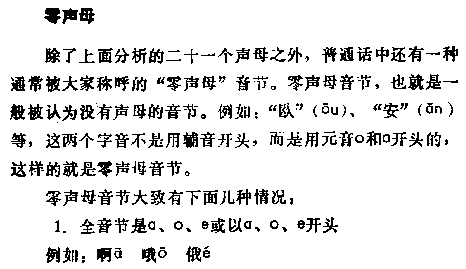 |
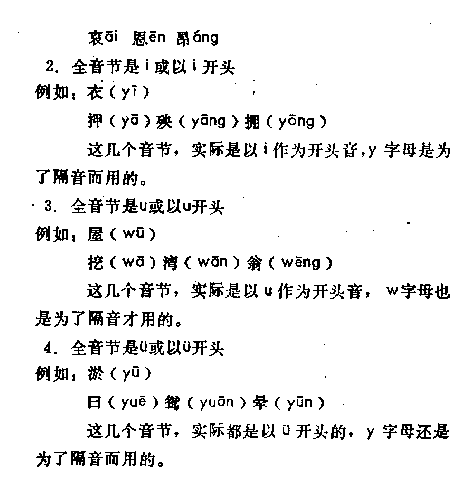 |
Syllables with "Zero Consonants" are as follows:
- The whole syllable is a, o, e or begins with a, o, e.
- The whole syllable is i or begins with i.
- The whole syllable is u or begins with u.
- The whole syllable is ü or begins with ü.
e.g.
e.g.
e.g.
e.g.

In fact, these syllables begin with ü, the letter "y" serves as sound separater.
Vowels:
In Chinese Pinyin there are 24 vowel phonemes including 6 pure vowels (a, o, e, i, u and ü) and 18 diphthongs (ai, ei, ui, ao, ou, iu, ie, üe, er, an, en, in, un, ün, ang, eng, ing, and ong). In the following table we can see both the old way and the standard way of writing the vowels.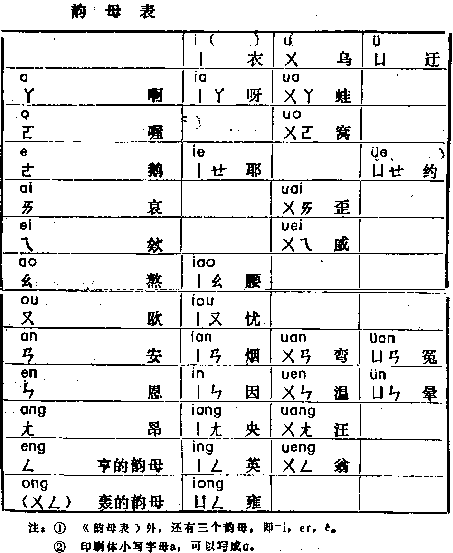
Tones:
In Chinese Pinyin, there are four tone symbols like -, /, \/, and \ which are marked on top of the main vowel. Besides there is another tone which is called light tone and usuallly it is not marked.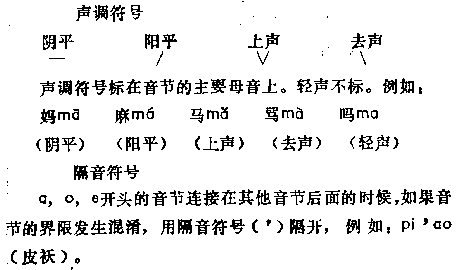
Back to top